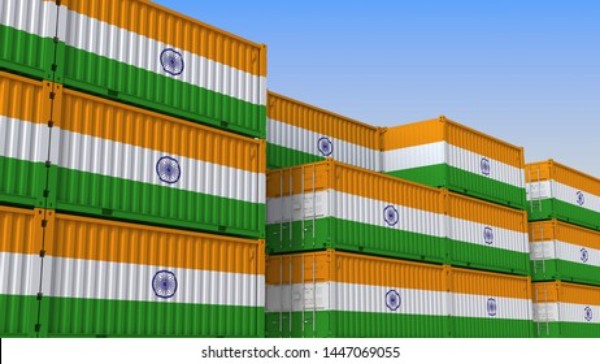
300% increase in freight costs plague SMEs
NEW DELHI : The shipping and logistics crisis plaguing the industry since the onset of Covid freight costs have skyrocketed 300% , worsening the situation for Indian SMEs who are navigating their business amidst the global pandemic, says a new report.
Drip Capital recently released a research paper around the ‘Global Shipping Crisis’ talking about the detrimental impact of the rising tide of freight costs on SMBs. Based on the shipping and logistics crisis plaguing the industry since the onset of Covid freight costs have skyrocketed 300% worsening the situation for Indian SMEs who are navigating their business amidst the global pandemic.
This competitive environment severely affected the SME exporters who were burdened by these high costs. In a statement, Pushkar Mukewar, co-founder, CEO, Drip Capital said, “The lack of containers doesn’t just increase logistics costs, but also affects the SMEs’ capabilities to fulfill orders and delays payment cycles while stressing their margins. If the issue continues, consumer-led economies are likely to scout for alternative markets with shorter trade routes to cut losses. This could severely harm SMEs who are already battling with the pandemic-led economic crisis.”
The global shipping crisis, results from the uneven post-Covid economic recoveries of the world’s largest importing and exporting countries. “The primary pillars of the crisis are significant fall in the availability of containers, reduced workforce, fewer shipping vessels operating, and erratic movements in demand for various commodities. Additionally, a lag in the supply of timber to manufacture containers, a rise in the number of containers being scrapped than produced further increased the cost of the containers which surged from $ 1600 last year to $ 2500 this year,” he added in the statement.
In 2019, China contributed to 16.1% of overall international exports. But when Covid struck China’s exports plummeted by 17% in the first two months of 2020. This was due to strict lockdowns leading to a manufacturing standstill, labor shortage to transport the incoming containers, and diversion of multiple reefer containers from major Chinese ports. Consequently, shipping liners predicted a further plunge in ocean freight and began skipping docks or even the entire route to shield themselves from significant losses.
“Delays in shipments mean the products would barely have a few months on the shelf of the buyers, who now run the risk of not selling the products. New orders will not be placed if the buyer suffers a loss. As a result, my strategy for the coming year until the container shortage issue persists is to only export on shorter and close-by trade routes. To avoid spoiling my trade relations, for the rest of 2021, I will not be servicing long-distance clients,” said Jignesh Mehta, CEO, Rise, and Shine Overseas, in a statement.
The pandemic led to an economic contraction across the world. In March 2020, with social distancing protocols and coronavirus clusters amongst dockworkers, there emerged a shortage of containers in Asia as empty metal boxes were stranded at North American and European ports. As China started to recover from the virus and its economic impact, it was flushed with orders from North American and European markets, and it recorded a 3.5% y-o-y growth in April 2020.
Hence, China began ramping up its global empty container repositioning program. According to S&P data, in June, the total volume of empty twenty-foot equivalent unit (TEU) containers shipped from the US to China increased by 188% Y-o-Y and 245% Y-o-Y in June and July, respectively. On the other hand, more cargo came into consumer-led economies like the US, where the goods movement system had slowed down due to a lack of workforce and a series of lockdowns.
In a statement, Sachin Malani from Shree Metal Products said, “The buyers are understanding the gravity of the issue and are willing to share the ocean freight costs with us. They are also willing to renegotiate the product rates. There is cooperation by everyone in the shipping industry in these pressing times. But, if the transport cost keeps increasing, there might come a time when our local distributors in the US start doing a cost-benefit analysis. They might evaluate whether they should keep importing from us or source locally from the US. Competing with US manufacturers could be a problem for Indian SMEs.”
Between August and October, when the lockdown was gradually relaxed, and demand started picking up in the west, the requirements for shipping containers returned. This surge in demand, coupled with the fact that empty containers were at the wrong place at the wrong time, saw Drewry’s composite WCI jump by almost 27%, from $ 2059 at the start of August to $ 2615 at the end of October. The index continued to rally, and in June 2021, it touched almost $ 6430.
Source : The Economic Times
